Novatech X70 CA Pro – 15.6in Core i7 Gaming Laptop Review
Novatech X70 CA Pro – 15.6in Core i7 Gaming Laptop
We check out the first gaming laptop to land in our labs sporting one of Intel's new Core i7 Mobile processors.
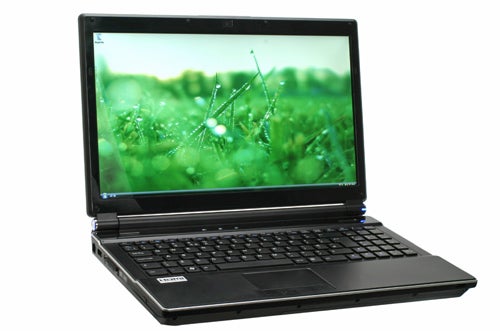
Verdict
Key Specifications
- Review Price: £1635.09
Gaming laptops have always been a compromise. Not only are even the best of them far less powerful than their desktop counterparts, but you pay an arm and a leg for the privilege and as a rule you can forget about them being portable or offering good battery life. However, in the office today we have something special: the Novatech X70 CA Pro.
This comparatively compact (for a gaming laptop) 15.6in machine offers a Full HD screen and is fitted with Intel’s latest CPU tech: an Intel Core i7 Mobile processor. This is wedded to other expensive premium features, like the nVidia GeForce GTX 280 GPU, Blu-ray player and 7,200rpm, 500GB hard drive, making the X70 CA Pro a very well endowed contender. Best of all this goodness will set you back a very reasonable £1,550 excluding an operating system (£1635.09 with the provided Windows 7 Home Premium), which isn’t anything like as arduous a price-tag as many before it have proffered. 
Like many gaming laptops, the X70 CA Pro’s chassis is a product of ODM Clevo and this is their W860CU model. At first glance it looks dreadfully similar to the Clevo disaster that housed the Rock Xtreme 840SLI-X9100. However, while this laptop’s frame and exterior have still been designed by the Taiwanese company, it’s vastly superior in terms of practicality.
Its smooth, matte black plastic lid might not be as eye-catching as the glossy finishes found on most laptops, but unlike those it won’t be marred by countless fingerprints. The ‘frameless’ display has also been done away with, replaced with a standard plastic bezel. Again it doesn’t look as good, but it isn’t quite as reflective, even if the glossy black plastic and reflective display cause their own issues. 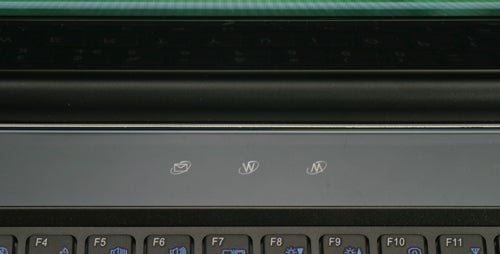
Vitally, though, Clevo has replaced the shiny wrist-rest and touchpad of its previous effort with the same smooth black finish as found on the lid – a massive improvement in terms of practicality and usability. Overall, while these large third-party chassis are rarely the most attractive we come across, the X70 CA Pro is a broadly inoffensive, functional effort that foregoes the all too common ‘bling’ lighting effects, save for a trio of tastefully backlit touch controls.
These subdued looks are enhanced by the presence of an isolation-style keyboard. Most of this keyboard is quite good. Though not backlit, the shallow keys offer decent feedback and the layout is pretty much as it should be. There’s also a full number pad, though the one thing we really miss was the excellent innovation of the previous Clevo with its macro-programmable gaming keys.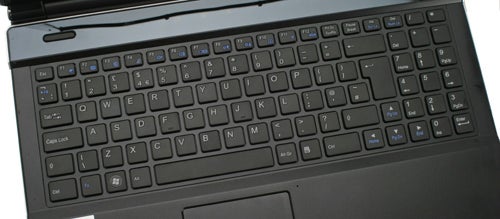
Unfortunately, a trait this model does carry over from its predecessor is the lousy spacebar. Its mushy feedback near the centre is bad enough when typing, but for gaming this combines with the occasional lack of registration to make an external peripheral such as the Logitech G13 Advanced Gameboard pretty much essential. Once could have been a fluke, but finding it in two successive models indicates a worrying trend in Clevo’s quality control. This malaise is continued in the touchpad, which though well proportioned and positioned, suffers from similarly stiff, imprecise and unreliable buttons. We’ve had laptops lacking in this department before, but unfortunately for Novatech the X70 CA Pro takes the biscuit here.
So you’ll want to be using external peripherals; just as well, then, that connectivity is very generous. On the left you’ll find a modem port, followed by USB, mini-FireWire, a memory card slot and the tray-loading 2x Blu-ray drive. It’s a shame you can’t downgrade to a DVD drive to save money, but you can upgrade to a Blu-ray writer for £227.
Moving to the right we find DVI and a dedicated eSATA port (i.e. it won’t take USB like the ones on most laptops), a 54mm ExpressCard slot and no less than four 3.5mm audio jacks for analogue surround sound, one of which doubles as a digital output. Finally, at the rear are a Gigabit Ethernet port, two USBs and an HDMI video output. 
Another highlight is the 15.6in screen, whose Full HD (1,920 x 1,080) resolution ensures not only a large amount of desktop real-estate, but an ideal aspect for HD films. Better still, this is a very bright and colourful display that suffers no visible backlight bleed, produces smooth gradients and plenty of subtle, dark detail. Viewing angles – traditionally a weakness on most laptop displays – are also good, showing that this is a better than average panel.
It’s not a perfect one, though, as its smooth gradients and good dark detail come at the expense of slight compression at the brightest end of the spectrum – rather like an overexposed photograph. It’s a fairly logical sacrifice for a gaming and entertainment system, where it’s usually more important to see things lurking in the shadows than in bright light, but does mean colour critical work might suffer.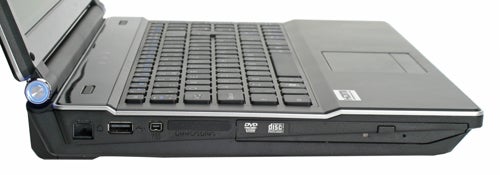
Unfortunately the speakers don’t quite match up. This isn’t to say they’re as bad as most laptop’s efforts, mind you, just that they’re a bit of a mixed bag. Treble is produced without distortion at very reasonable volume levels, so dialogue comes across rich and distinctive. Bass, however, sounds like a cricket in a tin cup at the best of times, so all those rumbles and explosions in your favourite games and films will lose most of their impact.
In all fairness, though, we’re not going to judge the X70 CA Pro by its speakers, it’s really the hardware we’re interested in: specifically the Core i7 Mobile processor. While the Core i7 architecture has been around on the desktop since last year and is even into its second iteration, up to now mobile users had to be content with the good old Core 2 architecture. 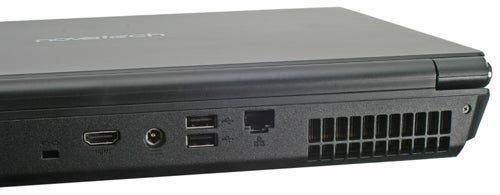
Obviously these quad-core processors (codenamed Clarksfield) are different from their desktop counterparts, with the most significant difference for the user on the move being that they have a relatively frugal thermal design power (TDP) rating of 45W, compared to 130W for the Nehalem Core i7 and 95W for the revised Lynnfield. However, they don’t suffer too much in the performance stakes, coming with 6MB or 8MB of L2 Cache, support for DDR3 RAM up to 1,333MHz, Turbo Boost Technology (which dynamically adjusts clock speeds according to load) and full virtualisation for up to eight hyper-threaded virtual cores. They can also disable three of their four cores when the system doesn’t require much processing power, a feature they share with desktop i7s and which will be particularly beneficial for mobile use.
As you’d expect given the relatively affordable price-tag, the X70 CA Pro sports the entry-level CPU of the three-strong Core i7 Mobile range, the 720QM. Don’t let its low base clock speed of 1.6GHz deceive you, though. Thanks to the turbo mode and the ability to disable cores, the 720QM can turn off unused cores and divert that power to a single-core, overclocking (or turbo clocking) it to as high as 2.8GHz without any change in total power use. This ultimately means its performance isn’t a far cry from a desktop Core i5, a CPU that normally runs at 2.66GHz but can turbo clock up to 3.2GHz.
That the lowest-end mobile Core i7 processor can nearly match its desktop equivalent is undoubtedly impressive, but even more so is the lead this lowly part maintains in our PCMark Vantage results over the previous Intel champion: the Core 2 Extreme (as found in Rock’s 840SLI-X9100) running at a constant 3.06GHz. Just imagine the performance advantage with the Extreme i7-920XM Mobile (a mere £540 upgrade!), which has a core clock speed of 2.0GHz and can overclock to 3.2GHz.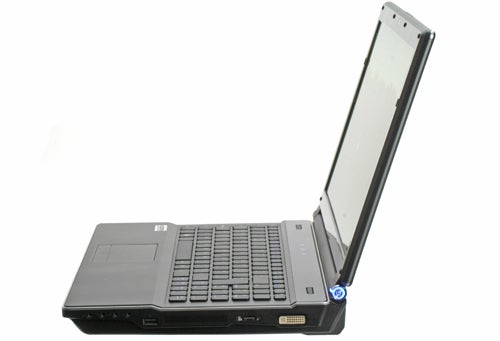
Novatech has backed the 720QM CPU with 4GB of 1,066MHz DDR3 RAM, which is pretty much par for the course and should be enough for most games to be reasonably happy. An option to upgrade to 8GB of 1,333MHz DDR3 RAM is there, but commands a princely £263.35. Networking options are well catered for, too, with 802.11n Wi-Fi, Gigabit Ethernet and Bluetooth V2.1 plus EDR all present.
Hard drive storage is fairly impressive to begin with: a spacious 500GB 2.5in drive running at a speedy 7,200rpm, which we reckon provides the ideal balance between price, capacity and performance. You can downgrade to a lower capacity, but the small price difference really isn’t worth it. On the other hand you could go all-out with a 250GB OCZ Vertex for an extra £501! Unfortunately, though, the chassis is too small to allow for dual drive configurations, so you can’t get an SSD for booting and a standard HDD for data storage.
As ever, though, regardless of the new Intel CPU or other goodies, a gamer’s main concern is going to be the graphics card. Again Novatech has provided the most up to date chip available in the form of an nVidia GeForce GTX280M with 1GB of RAM. Unfortunately, while it’s the best available, the GTX280M is a far cry from its desktop namesake. In fact it’s based on same core as the rather long in the tooth 8800-series desktop card and is a simple speed bump from the 9800M, albeit produced on a smaller 55nm process.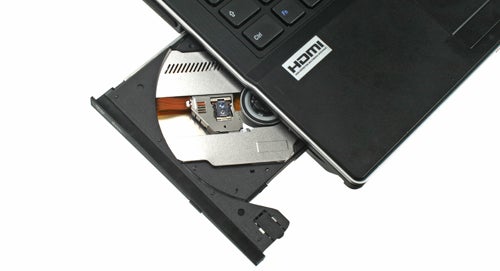
This is reflected in Crysis, where the X70 CA Pro managed a relatively paltry 20 frames per second (fps) in our intensive test at the screen’s native resolution using the ‘High Detail’ setting and DirectX10. Notching the resolution down to 1,600 x 900 did return a perfectly playable 26fps average, though, and switching to Medium detail or the DX9 code path would produce playable frame rates and retain plenty of eye candy. Also, as Crysis is several times more demanding than other games, most other titles aren’t such a challenge. Call of Duty 4, for example, played at a silky smooth 66fps at 1,920 x 1,080 and maximum detail.
Considering this is one powerful and power-hungry machine, it’s no surprise that the 3,800mAh (42.18Watt-hour) battery delivers extremely poor longevity. This battery would be mediocre at best on any laptop, so on a powerhouse such as this it ensures you’ll regularly need a power socket nearby, with the X70 CA Pro lasting just 45 minutes in MobileMark 2007’s Productivity benchmark – not enough to complete a single run. This doesn’t factor too highly in the overall score, but even for a gaming laptop it’s a very poor result. 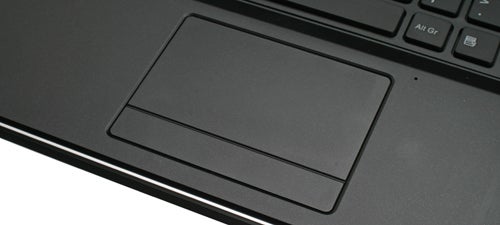
This leaves the X70 CA Pro in a slightly awkward position. Without any battery life to speak of it doesn’t represent much of an advantage over a larger 17.3in or 18.4in machines, aside from being physically smaller. However, while its GPU can’t quite handle Crysis at its highest settings, it will have no problems with most other games and the Core i7 Mobile processor makes it an outstanding option for anyone in need of a powerful quad-core system for CPU intensive tasks like video editing and RAW image manipulation.
This leaves just the irksome build issues: namely the dodgy spacebar and touchpad’s horrible buttons. While annoying, if you can live with these issues the X70 CA Pro offers excellent value for a laptop of this configuration. Its nearest equivalent would be the Alienware M15x, which offers an identical specification for £1,607 save for one important detail: you get a far inferior GTX260 graphics card. Clearly its chassis is far more refined and exciting to behold, but in price-performance terms the Novatech is the better option.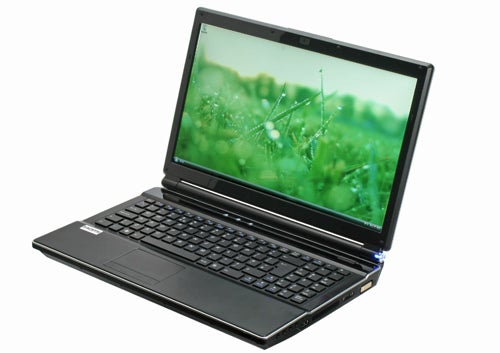
Verdict
You get a lot for your money with the X70 CA Pro, making it all the more disappointing that silly build issues prevent it from winning an award. It’s still and excellent option, though, particularly if you want a powerful desktop replacement in a smaller footprint. And, Crysis aside, it will run games at high settings with smooth frame rates – anything more requires SLI and over £2,000 to spare.
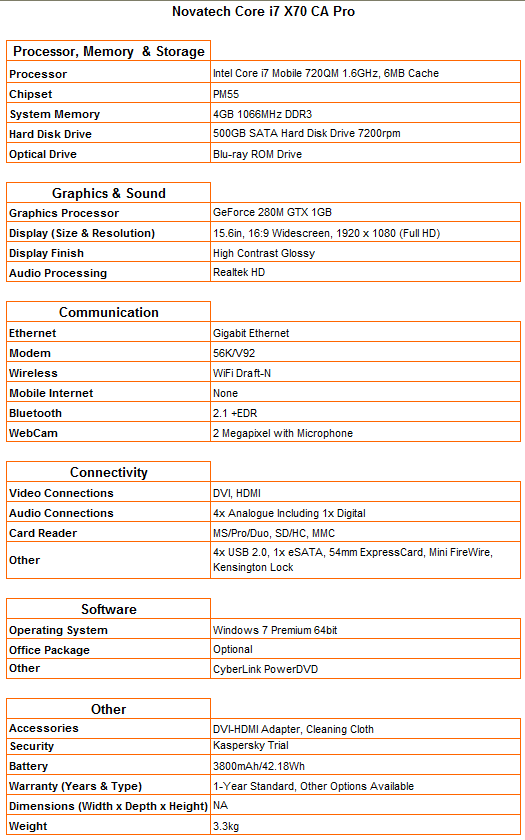
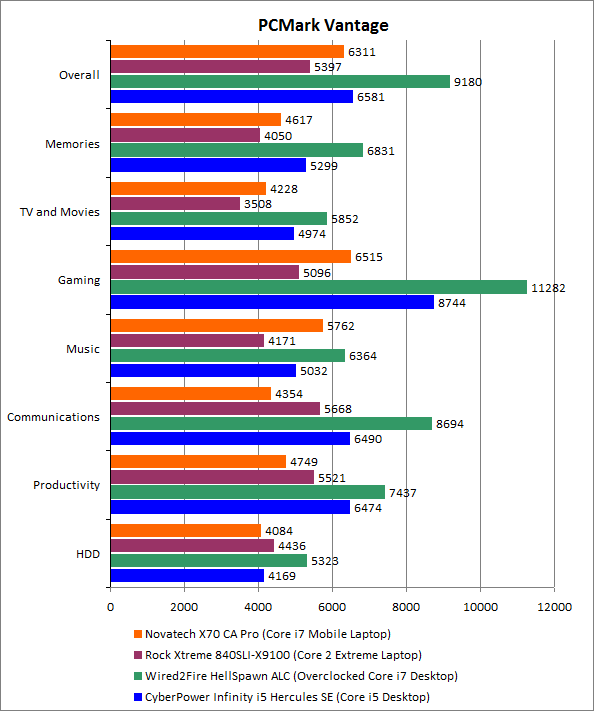
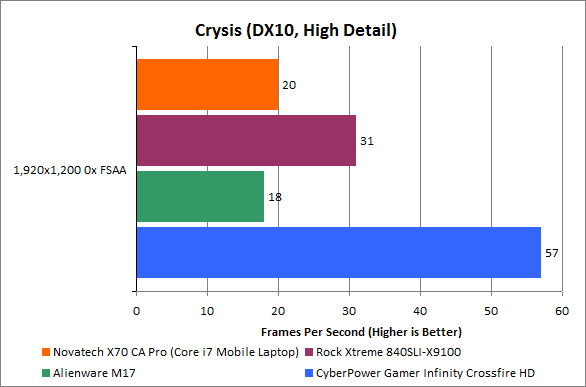
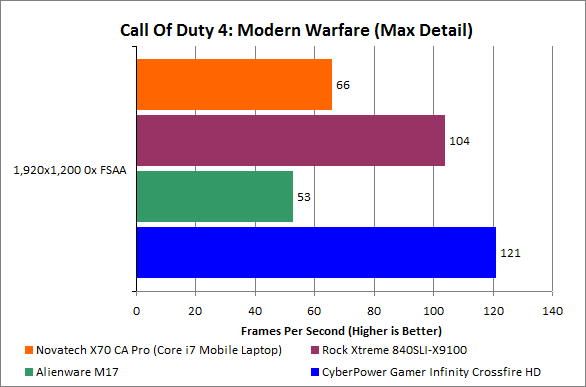
How we test laptops
Unlike other sites, we test every laptop we review thoroughly over an extended period of time. We use industry standard tests to compare features properly. We’ll always tell you what we find. We never, ever, accept money to review a product.
Trusted Score
Score in detail
-
Performance 9
-
Design 6
-
Value 8
-
Features 9
-
Battery Life 2

